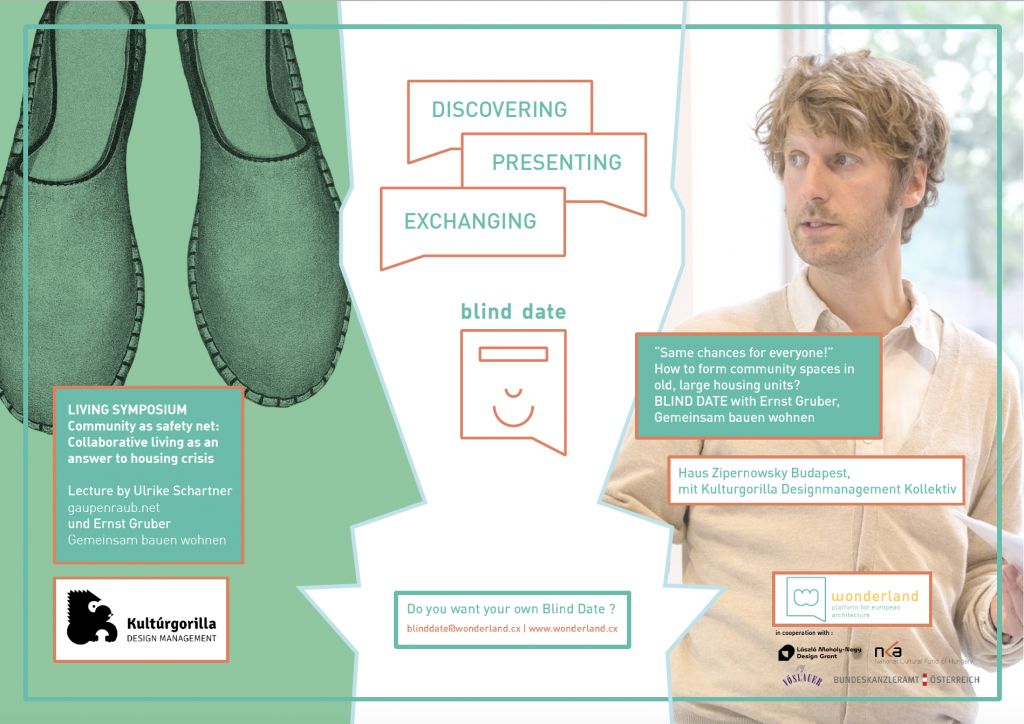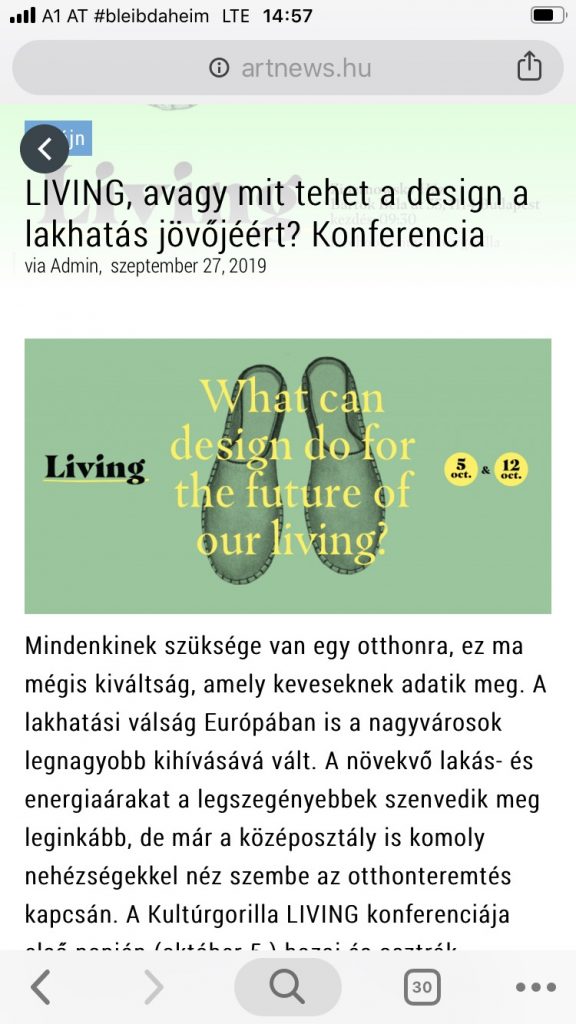LIVING!
What design can do for the future of living
5th October (Saturday) 2019, Budapest (HU)
An event of Wonderland and Kultúrgorilla

An architectural blind date between Austrian experts and Hungarian experts in two episodes
Summary
Everyone needs a home, but today it is a privilege of the few. Dozens of families are evicted every week in Hungary. Habitat for Humanity’s 2018 report estimates that 2-3 million people live in housing poverty in a country of 10 million inhabitants – in the middle of Europe. With the increase in population density, the housing crisis has become one of the most pressing problems in cities, not only in Hungary but also throughout Europe.

Co-living.
The poorest are hit the hardest by rising housing and energy prices, but the middle class is already struggling to make a home. At the LIVING conference by Kultúrgorilla, Hungarian and Austrian professionals presented design and architectural solutions from the co-housing field, exploring how to create model solutions through collaboration, community space, and community thinking.
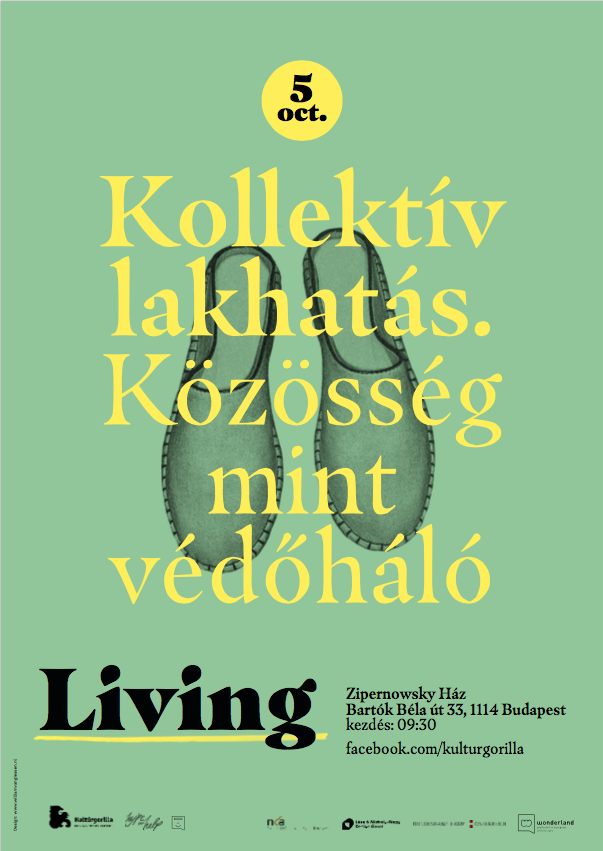
How big a living space does a person need? What can design do for the future of housing? Traditional responses to the problem are being challenged by new factors such as climate change or the refugee crisis. Not only do they exacerbate the symptoms, they also widen the scope of the population affected: too densely populated, unhealthy, unaffordable living spaces, lacking electricity and heating are not an issue for someone else but they are everyone’s problem. Can the holistic, cooperative, multidisciplinary toolkit of design help create livable, affordable and sustainable living spaces at the same time?
The English-language conference presented projects that could be considered as good practices, through discussions, inspirational lectures and workshops. Launched during the week of the UN World Housing Day, the program series hosted a half-day public conference and workshop, exploring the potential of the architectural and design professions to make a difference in housing poverty, even beyond their own disciplinary frameworks.

Co-living. Are communities our safety net?
Program
5th October (Saturday)
09:30-10:00 Registration
10:00-10:30 Keynote speech
- Ernst Gruber: Democracy at your doorstep: Six alternatives to the destructive effects of neoliberalism
Models of collaborative living in Europe
10:50-11:30 Rapid presentations / Collaborative housing models
- Ulrike Schartner, architect (Gaupenraub+/-, Vinzidorf project)
- Annamária Babos, architect (Közösségben Élni, E-Co-Housing project)
- Csaba Jelinek, urban sociologist (Periféria Policy and Research Center)
11:30-12:30 Discussion / Community as safety net?
13:30-17:00 Workshop / Community-space for a typical apartment house in Budapest
Blind Date by Wonderland Platform for Architecture
17:00-17:30 Workshop presentations
/18:00-19:00 Wonderland Manual for Emerging Architects / Silvia Forlati SHARE Architects, Book presentation/

The event Living!
More than 40 professionals participated in our program and we succeeded in establishing a dialogue between design professionals and professionals dealing with housing poverty. During the event, stakeholders discussed questions in panels, workshops and post-presentation question/answer blocks. Our first large topic was community housing. Several practices abroad have proven the viability of the model to provide affordable and durable housing for various social groups: the event featured examples from Austria, Germany and Switzerland primarily, and the first Hungarian experiments were also introduced. We have seen through the examples that the models presented created homes for hundreds of families, and provided feasible alternatives to students, elderly, low-income families, or even those on the margins of society. The attending Hungarian professionals saw a significant potential in community housing in addressing the housing crisis in Hungary.

The architect, researcher, and associate at wohnbund:consult Ernst Gruber presented European collaborative housing models in his keynote address titled:
Democracy at your doorstep:
Six alternatives to the destructive effects of neoliberalism.
He mentioned best practices, as well, to go with each model. He emphasized the areas where these models can be applied effectively, as in the ownership issue in the case of properties. The ratio of privately owned apartments is extremely high in Hungary compared to the European average. Much more people would be able to obtain homes by creating shared ownership proportions. One of the many benefits of the models created to alternatively finance property development is that although the individual does not have 100% ownership of a property, their housing is guaranteed long term: they do not need to fear for losing their home. Quite often umbrella organizations ensure that, who are – shareholders of the property themselves. Bikes and Rails, Willy Fred or schloR Austrian project are good examples of that.
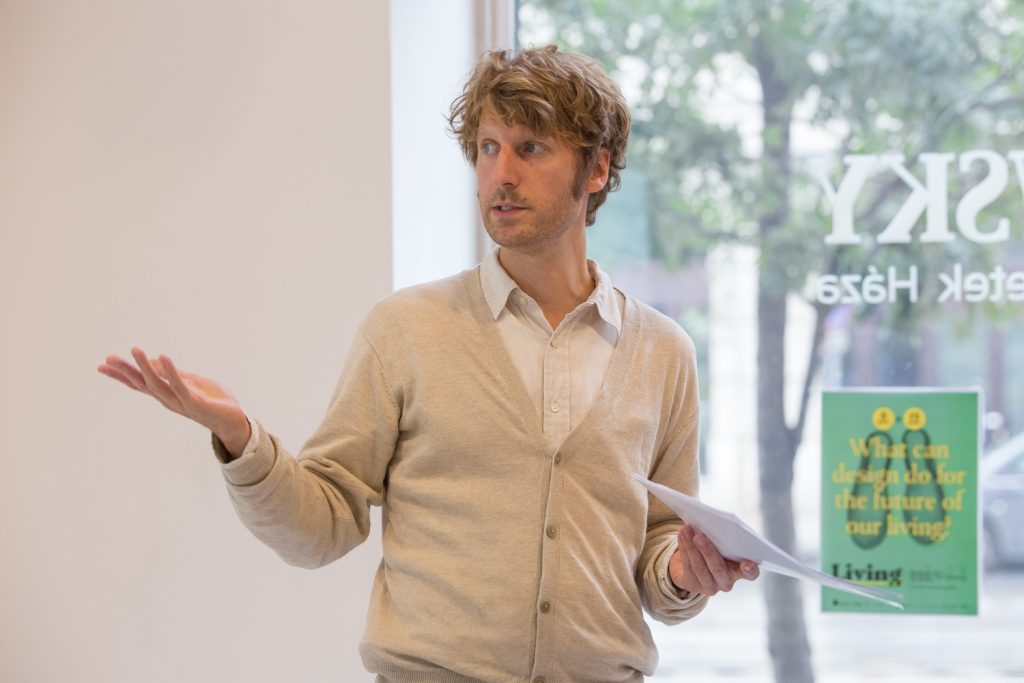
Ernst Gruber presented model solutions in other areas, as well, as cultural participation or functions placed outside the apartment (washing, food supply, cooking) that provide for a given housing community. He mentioned the Zurich-based Karthago as a model. He stressed the importance of solidarity as a value that is an essential condition of collaborative housing projects but is hardly feasible without money. At the same time, even luxury services can be carried out using the collective money and shared by everyone: these might include even swimming pools, as in the case of the Berlin Spreefeld or a boat in the Netherlands or more extreme architectural or design developments that help using space more effectively. The joint management of the community can afford what individuals cannot.

The creators of the projects presented three good practices during the following lecture series. Annamária Babos, active member of the initiative Közösségben Élni (Living in Community) described the experiences of the “More than a dwelling house” project of Zugló. She mentioned several interesting issues about how they would want to create an operational community with those moving into the house in the future since the goal was to form intergenerational collaboration and inclusion. It was also discussed how the involved NGOs and professional organizations could cooperate with the Zugló municipality that managed the development. The rent-controlled apartment building is the first energy-efficient and affordable community housing developed by municipality support in Hungary, where the renters will commit to not having cars. In return – because there will be no parking spots – the garden can become much larger. The latter will be designed and built together with the residents. The main goal of the project supported by 1,5 billion HUF is to create an innovative, energy-efficient, municipality-owned rental building in Zugló.
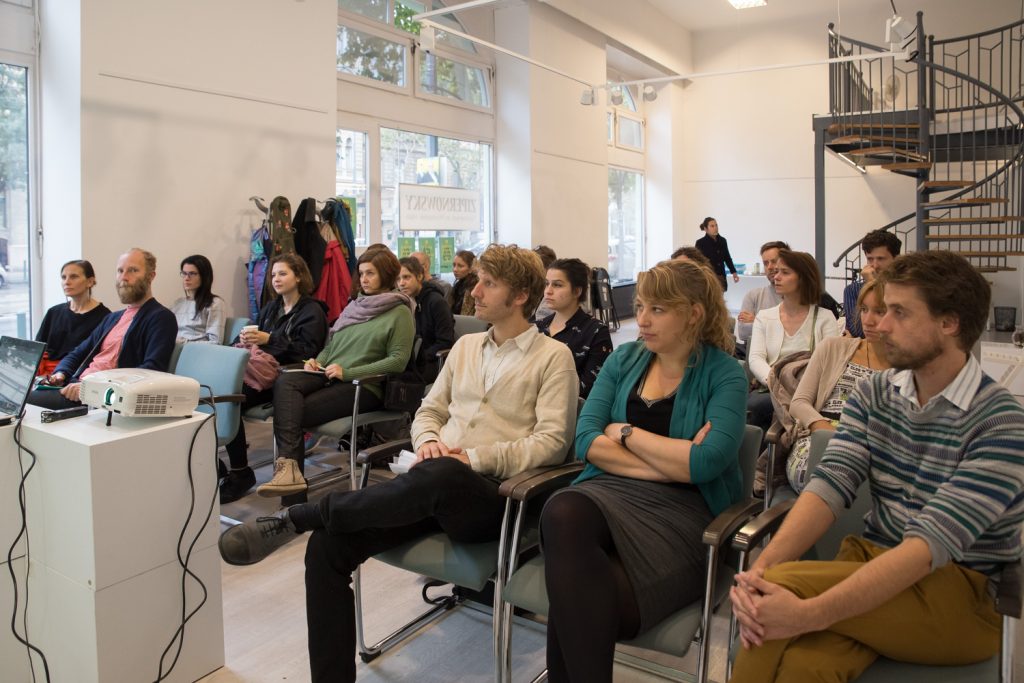
The urban sociologist Csaba Jelinek, associate at Periféria Policy and Research Centre elaborated on the formation of the Hungarian housing crisis and its indicators, with the 100% rise of residential property between 2010 and 2017 being one of them. These circumstances served as a starting point for establishing the Rákóczi Kollektíva housing community, of which the presenter is also a member. The team that realized community housing also in Zugló, posed the question: what is the best form of self-support where our home could be enjoyed without becoming indebted among current conditions when securing housing is only possible through inheritance or credit rating. The answer was found in forming a housing cooperative. The Rákóczi Collective has been working on realizing a housing cooperative model for years that would ensure the housing of its members through a collective ownership structure beyond individual capital and means, without the threat to become indebted. The collective created a completely independent home of 282 sq meters without the support of the municipality where every resident has their own space, complemented with community spaces. The residents decided to reduce the size of their own space in favour of community spaces. The financial model is backed by 50% own resources and 50 % friendly credit. The small homes are rented for 60% of the market price from their own cooperative, that will repay the loan. By now, they have become members of MOBA, which brings together European alternative housing initiatives and actors to support its members with a knowledge base and advocacy.
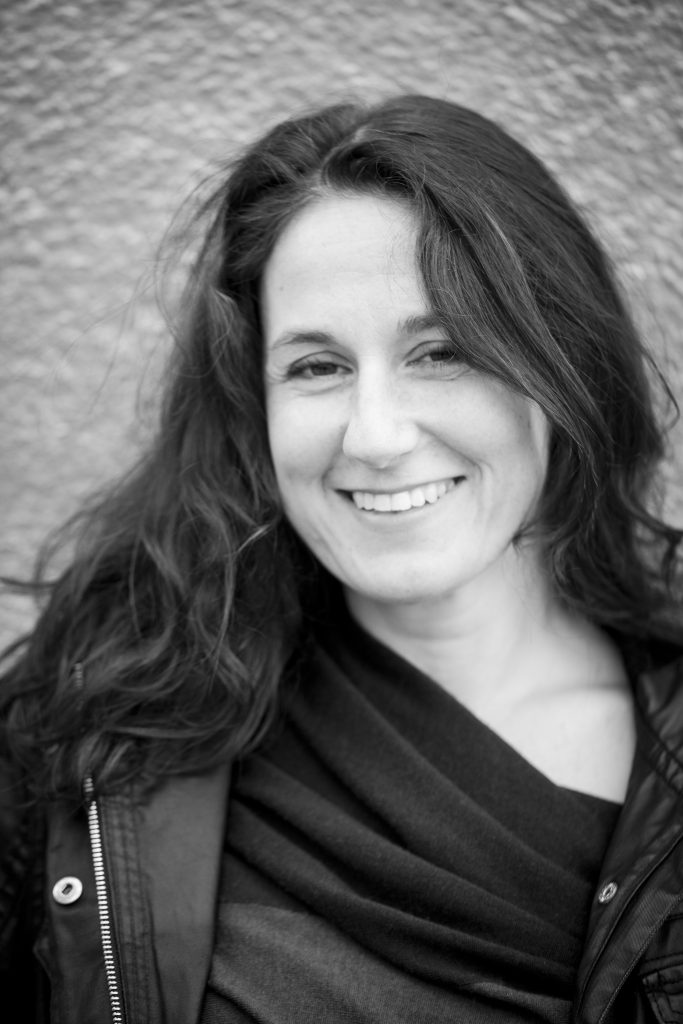
Architect Ulrike Schartner, co-founder of the Vienna based Gaupenraub+/- studio presented a model for a marginalized group, housing homeless people with alcohol problems.
The architectural firm has already launched several award-winning social projects, created homes, relationships, and a way out for the most needy. The Vinzidorf architectural concept is for people who are not welcome in any way by the social welfare system and who are not psychologically or physically prepared to live under the same roof with others, yet need to fit into a surrounding residential community. Built entirely by private funds, donations and volunteer work, the concept of the village is that all residents can move into a mini-hut with a bed and a washbasin: all other services and amenities are available in the common areas. The concept gives high priority to the demand for isolation and private sphere, supporting the principle of gradual integration and rehabilitation. After years of search for a space, the complex was built on a church-owned property, the predecessor of the Vinzirast restaurant and homeless shelter in downtown Vienna. The operating principle of the latter combines the opportunities of revenue and job creation, and the visual concept is an award-winning architectural design featuring many upcycling solutions.
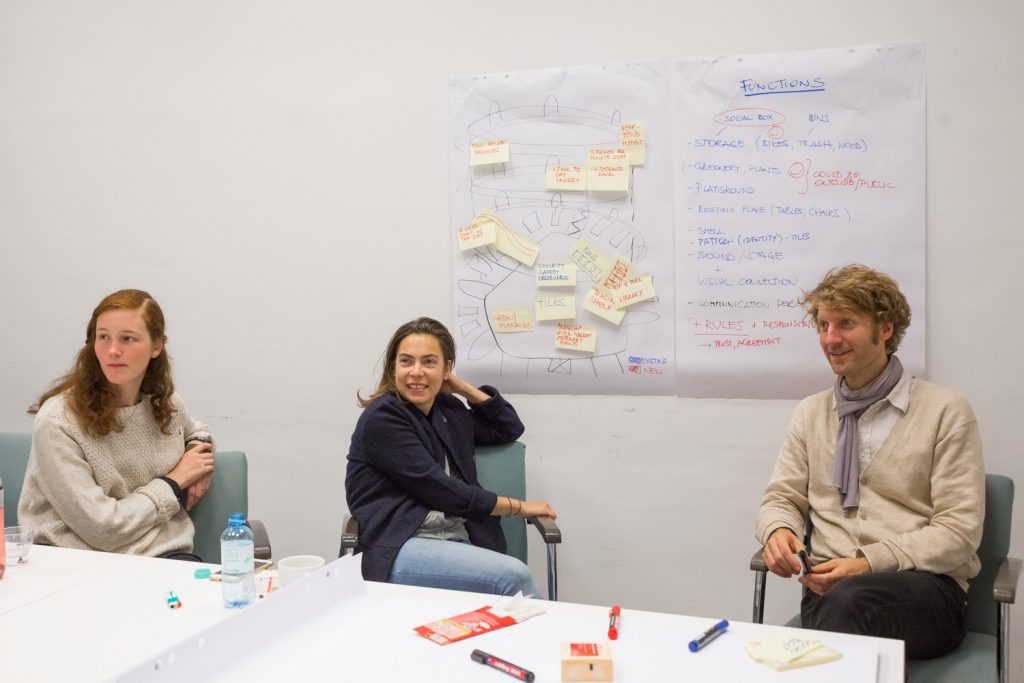
In the second half of the day, participants exchanged experiences with Ernst Gruber again in a professional workshop organized together with the European Wonderland Architectural Platform. The topic was how to convert existing spaces into community spaces in typical rental buildings in Budapest. The purpose of the transformation is to display co-housing elements and thereby thematise the effects of co-housing on the quality of life (social, financial with participants) in a typical Budapest residential design. We visited several apartment buildings on Bartók Béla Road, analysed similarities, returned to the workshop site to form a typology, and after a few hours of thinking together, different models were built. One was about how semi-private spaces (hanging corridors, part of the courtyard) could be better utilized by the community for children (for example, a slide from the first floor to the courtyard) or household functions (dryers placed on railings, adaptation of Mediterranean solutions in Budapest). Other solutions have pointed towards greening and common energy generation. The ideas born during the conceptualization are worth further consideration and elaboration. The purpose of the workshop was to share knowledge, namely how, by what methods can we think about this issue more effectively with the help of a non-Hungarian architect professor / researcher.
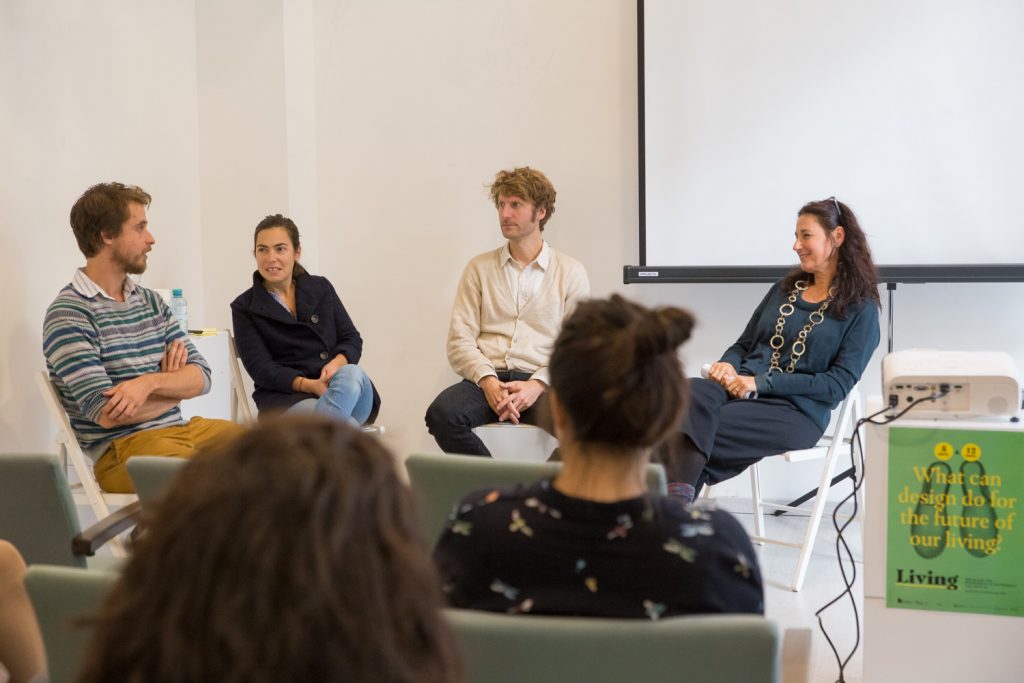
Some feedbacks for the LIVING! event
Ernst Gruber, researcher, architect, teacher (wohnbund:consult, AT)
“I have been invited by Kultúrgorilla to Budapest to speak about collaborative housing models from Europe. In my keynote I aimed at combining both my activist background from the “Initiative für gemeinschaftliches Bauen und Wohnen” as well as my hands-on experience from wohnbund:consult. The context of the housing crisis led to focusing on a different aspect of collaborative housing models and helped me to gain a new perspective altogether. The setting with the other speakers invited has been very fruitful for the discussion and helped me understand the housing situation better in Hungary. The workshop afterwards discussed some of the ideas mentioned in the morning sessions with actual questions from participants within the setting of the neighborhood where the event took place. This helped to gain further understanding and contextualised the themes even more.”
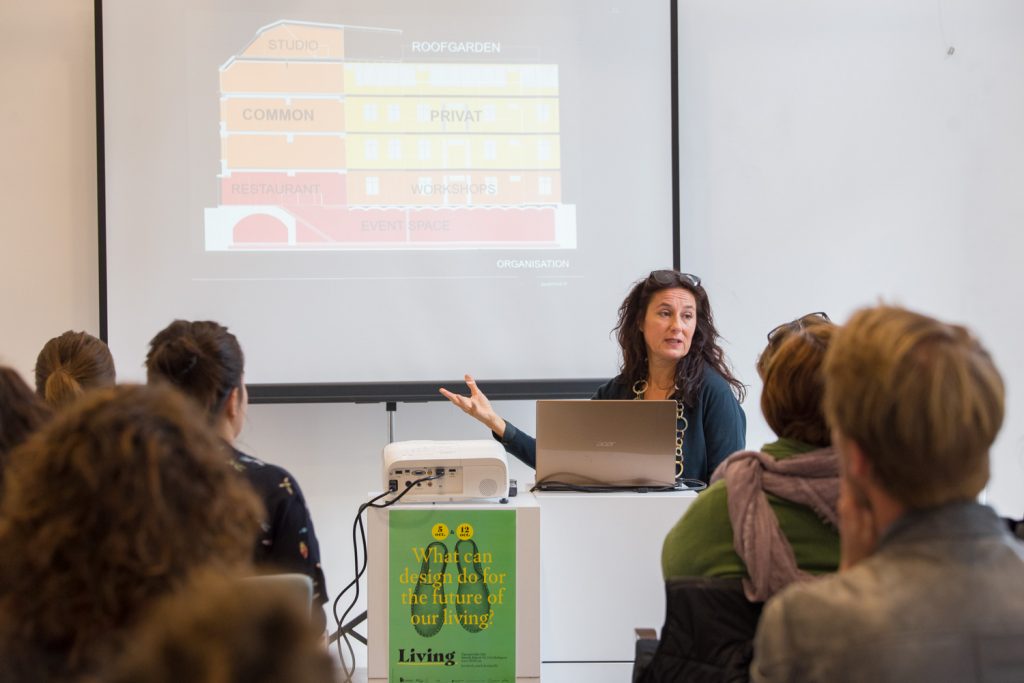
Ulrike Schartner, architect (Gaupenraub+/-, AT)
“It was a pleasure to be part of this event, to come into contact with new people and their projects. To get new perspectives on the theme was and is necessary to get on with new ideas and a stronger argumentation for the necessity of new housing/living forms. The organization of the event through your team was efficient, the preparations smoothly done, and all questions I had in advance were quickly answered. I hope you can go on with this type of lectures, discussions and workshops to get more focus on this important theme.”
Mini Otthonok: Mit tehet a design az elhetö kislakasert?
Have a look on the Hungarian publication on the topic.

